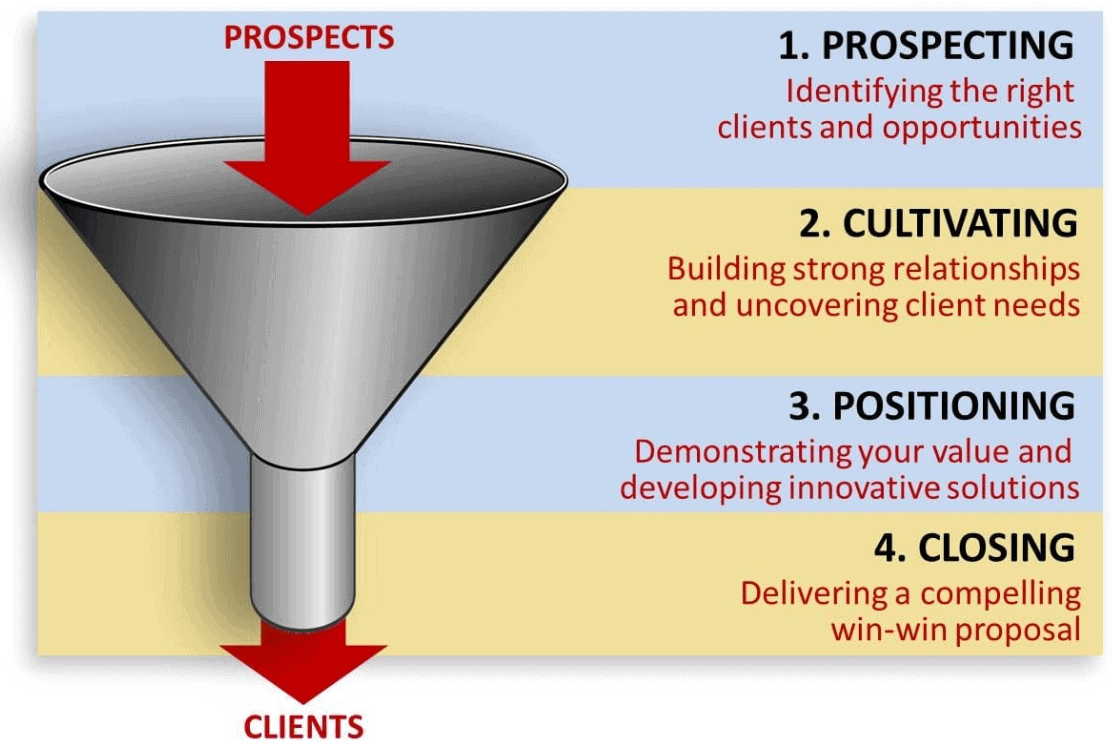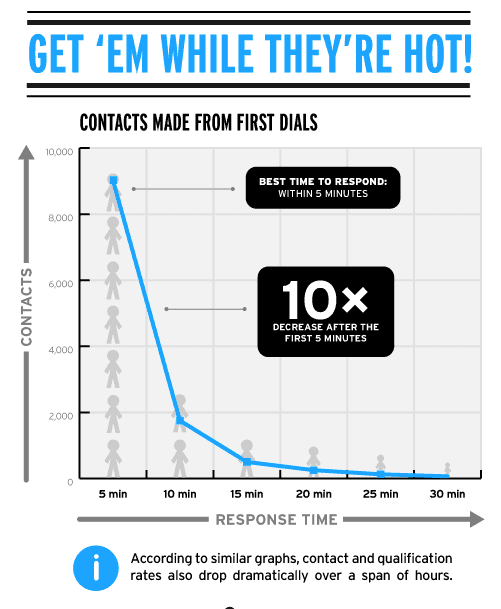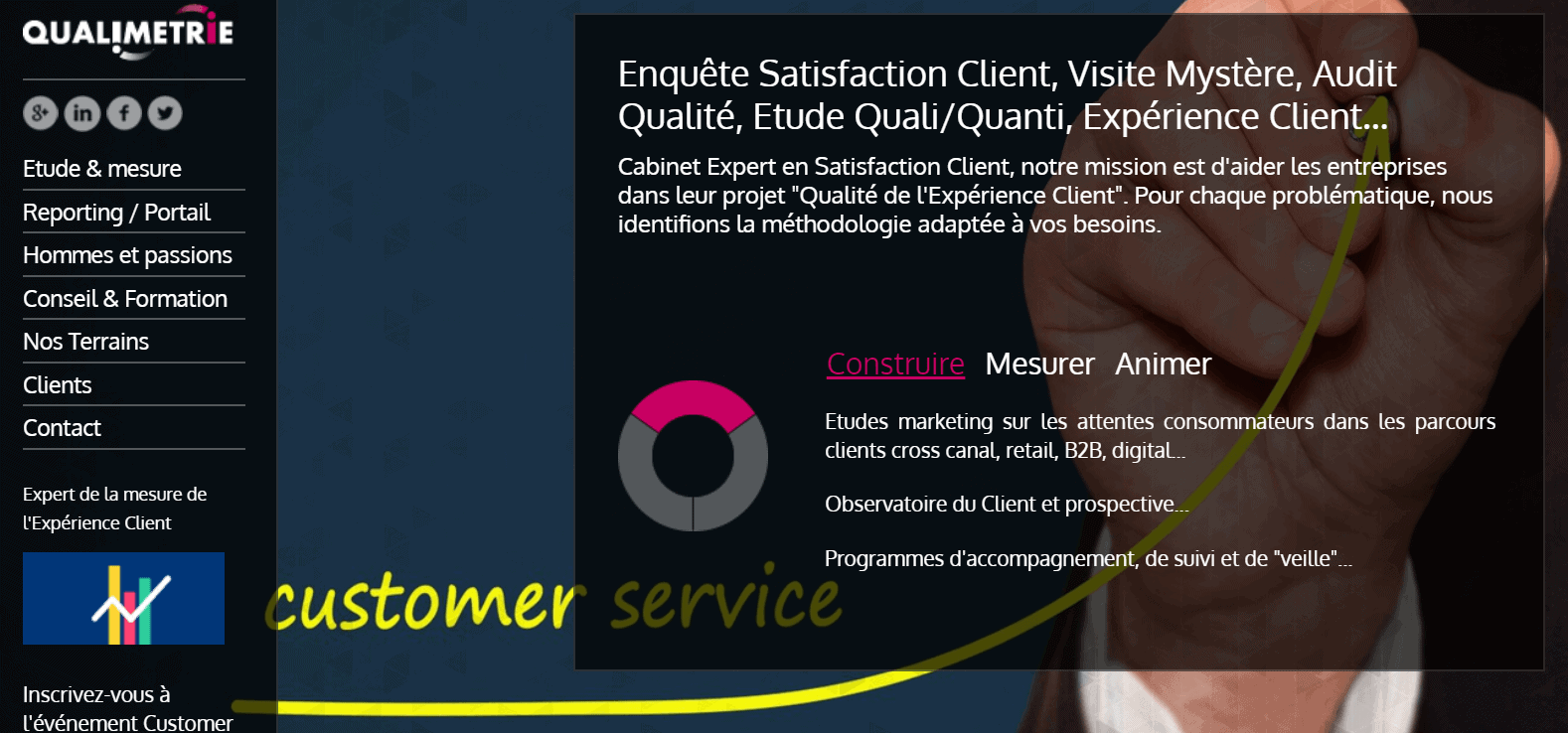Generating leads is one thing. Qualifying them and turning them into customers is another. It is this second part of the job that we will discuss in this article. This second phase is often referred to as the sales funnel.
The sales funnel describes the different stages that leads go through, from being a simple prospect to a loyal customer. In this sense, the funnel is synonymous with the buying journey. But the funnel also refers to all the processes, techniques and tools used by marketing and sales to move leads through these different stages.
Do you want to improve the sales performance of your B2B company? Then you need to optimise your sales funnel and work in particular on the handover of leads between the marketing team and the sales team. We explain how to achieve this.
Sommaire
Commercial Funnel – Organisation and vocabulary
The sales funnel can be defined as the process of tracking and measuring the effectiveness of the company in attracting, engaging, converting and retaining customers. The term “sales funnel” is sometimes referred to as the conversion funnel. From the customer’s point of view, the sales funnel defines the different stages that an individual goes through between being a prospect and a customer of the company. The sales funnel, to give an alternative definition, is the set of processes, tools, techniques and means used to move potential customers through the conversion funnel and turn prospects into customers.

A company must constantly seek to improve its sales funnel to acquire new customers. We will see shortly, and this is the central theme of this article, that one of the main ways of optimising the sales funnel is to improve the handover between the marketing team and the sales team. But first, let’s clarify a few vocabulary elements that are important to keep in mind:
- Lead. A lead is a prospect who has shown an interest in your brand or products. For example: a person who has clicked on one of your ads, filled in a form, signed up for your newsletter, etc. Leads can come from inbound or outbound channels.
- Outbound leads. These are generated by salespeople when they target individuals who have potentially never heard of the company. Email prospecting is one of the most effective techniques for generating outbound leads in B2B. However, there are other outbound channels: cold calls, postal mail, messages sent on social networks. In an outbound approach, it is the company that goes to the customer. In B2C, the most used outbound channel is advertising.
- Inbound leads. These are leads that come to you. For example, an individual who downloads one of your white papers and provides information about him or her in exchange: name, first name, email address, company name, position within the company, etc. Or an individual who signs up for a free trial of your service.
On the difference between these two categories of leads, we advise you to read this article: “Inbound vs Oubound marketing – Which marketing strategy for your project?
Two actions are generally carried out once a lead (well, its data) enters the company’s database (marketing automation tool, CRM):
- The data, the leads are filtered.
- Leads are “enriched”. Lead enrichment is the process of increasing the amount of information you have about your leads by using third party data. For example: company turnover, sector of activity, etc. Lead nurturing plays an important role in the lead qualification process.
Then there is the classic distinction between Marketing Qualified Lead (or MQL) and Sales Qualified Lead (SQL). To understand this, it is important to remember that not all leads have the same value. The lead scoring system identifies the leads with the highest probability of conversion and the highest lifetime value. Lead nurturing campaigns are used by the company to communicate with its leads, inform and educate them (by means of sharing guides, white papers, invitations to webinars, newsletters, etc.). Ultimately, the aim is to develop their interest in the company and the services it offers. Lead nurturing is used to qualify leads and determine the right time to contact them.
Leads that react to shared content, leads that show an intention to buy, that show a certain level of commitment and interest, are “Marketing Qualified Leads“. As soon as the marketing team, which is in charge of lead nurturing and lead scoring, considers that a lead is ready to be contacted by the sales team, it becomes a “Sales Qualified Lead“. It is then passed on to the sales team. The word “estimate” is a poor choice, as this is not done by guesswork. It is the lead scoring system set up in the company that makes it possible to determine, by crossing a threshold, when a lead becomes SQL. The importance of a good lead scoring system is immediately clear.
So, to sum up, it is when an MQL lead becomes an SQL lead that the handover between the marketing team and the sales team takes place. We insist on this point because it is this moment of handover that we will talk about in a moment. One of the keys to improving the sales funnel, again, is to optimise this handover moment.
Once the SQL lead has been passed on to the sales team, the sales team qualifies it. This stage involves collecting as much information as possible about the lead in order to clearly identify its challenges, needs, expectations and objectives so as to best adapt the sales pitch and the offers made and optimise the chances of transforming the lead into a buying customer. The BANT framework – Budget, Authority, Need, Timeframe – can be used for this qualification work. On the BANT framework and other lead qualification analysis grids, read the article: “The complete guide to lead qualification“.
Finally, here are some additional vocabulary items for the post handover stages:
- Opportunity. A lead becomes an opportunity when it meets all the qualification criteria. The sales person, at this stage, may contact the lead to offer a demo by a member of the support team or an account manager. The investment, the level of support offered depends on the revenue potential the lead could generate for the company. The best leads should be pampered more than the others. Prioritisation and intelligent distribution of effort should be carried out.
- Proof of Concept (PoC). This refers to everything that enables you to convince the lead of the interest of the proposed services for his company, of the capacity of your solution to respond to his challenges, his needs and his objectives. The higher the potential deal, the more important the proof of concept. If you are selling SaaS software, you can prove the concept by having the lead test the solution for free.
- The sale. This is the coolest part. The customer signs the contract, pays the first invoice or the first deposit. You celebrate with champagne. Except that this is where the real work begins. The sale is less the end than the beginning of a cycle. The Customer Success team must train and accompany the new customer in the installation and use of the product.
- Onboarding. The onboarding process, which consists of accompanying the customer in his first steps with the solution, is handled by the Customer Success team. This process is complicated when there are several types of users and several levels of access to manage. Some companies offer weekly webinars open to all their customers. This tool is an opportunity to explain how the solution works and to present new features. Sometimes companies offer individualised support, either remotely or directly at the customer’s premises. The support process never really ends, so it involves a certain investment on your part. But keeping a customer is always cheaper than acquiring new ones.
- Renewal / upsell. The performance of your Customer Success team can be measured by some simple KPIs: subscription / contract renewal rate, upselling, churn rate. In general, the CS team starts to discuss renewal with customers two or three months before the contract expires. But if you have a regular dialogue with your customers, you don’t need to schedule a specific meeting on this topic.
These different stages provide a clear, if very schematic and simplistic, representation of the sales funnel. It is important to have a clear vision of your funnel and the different stages through which your customers pass in order to be able to identify, for each stage, specific KPIs and tools/techniques to facilitate the passage to the next stage.
To complete the reading of this article, discover our complete guide on lead qualification by marketing and sales teams (MQL Vs SQL).
Optimising the handover – The main friction point in a sales funnel
As mentioned, the handover between the marketing team and the sales team in handling leads is the most sensitive moment, the main point of friction in the sales funnel. Sales people sometimes complain about the poor quality of the leads that marketing sends them. Conversely, marketing is sometimes surprised by the low number of sales won by salespeople. Here are 5 tips to improve this handover.
#1 Set clear expectations for lead follow-up
When do you want sales people to respond or contact the leads? How quickly? What is the maximum response time after this or that action by the lead? These are questions that you must put on the table and to which you must provide clear and precise answers. Several studies have shown the importance of processing time and reactivity in the lead conversion rate. The more time you allow to pass, the more your chances of converting a prospect into a customer diminish. For example, we can mention theInside Sales study, the results of which are as follows:

What is the response time? There are no ready-made answers. It depends on your business, but also on your human resources. A word of advice: always try to put yourself in the shoes of your leads, this will help you find the right timing.
Discover the complete list of the best B2B prospecting tools.
#2 Your salespeople must have an intimate knowledge of your leads’ buying journey
Telling your sales people what you want them to do is a good start, but it won’t help them if you don’t train them on the typical buying journey of your leads. Your sales people need to understand how your leads work and what path they take before they get to the sales people: how do they search for information? what channels do they use? what content do they have access to? how does the decision making process work? how are they nurtured by marketing? This knowledge will help your salespeople become more efficient and relevant, delivering a better experience to prospects.
#3 Conduct a mystery shopper experiment
Want to know how your salespeople handle the handover? Why not try a mystery shopper experience? The idea is simple, you probably know it: you pretend to be a prospect (by filling in a contact request form for example) and see how you are “treated” by the sales staff. If you don’t want to do the experiment yourself, you can entrust this work to a specialised company (like Qualimétrie).

You will learn a lot of things: how long you have to wait to be taken care of, the skills of the salespeople, their interpersonal skills, their behaviour, etc.
Discover our complete guide to qualifying, scoring and warming up your leads with automated scenarios.
#4 Use data to measure performance
Want more insights? Analyse the KPIs that allow you to evaluate the performance of your sales department: number of leads sent to sales, conversion rate of these leads into “opportunities”, conversion rate of these “opportunities” into sales proposals sent. And, of course, the rate of conversion into closed deals. Set up dashboards that allow you and your teams to follow the evolution of the KPIs we have just listed in real time. Your CRM allows you to track the activity of your sales staff on a daily basis. Follow the evolution of the status of leads, calculate the value of the pipeline, and ask your salespeople about this data. This analysis of data and KPIs will enable you to quickly identify areas of weakness in the sales funnel and the means to remedy them.
#5 Improve practices by implementing a feedback and reporting logic
Once you have applied the above tips and started to modernise your marketing & sales teams, you will already have a clearer vision of your objectives. We also advise you to set up what the English call a close-loops system. This is an approach based on reporting and feedback that allows salespeople using the CRM to give feedback to marketing about the leads they have processed. This approach allows marketing to progress in its way of qualifying and nurturing leads and to strengthen the dialogue between the two functions. This dialogue is fed by the analysis of CRM data and reporting.
Every prospect that enters the information system, every contact, every step in the sales process is recorded in the CRM. Every conversation, every email, every point of contact is planned in the CRM. All the tools used by the sales staff are integrated into the CRM. Every step of the buying journey is tracked, so you have access to data that allows you to understand why a prospect is moving backwards or forwards in the funnel. CRM is a wealth of information. All these insights should be used to identify problems and improve the practices of your teams. All the knowledge that you will accumulate thanks to these analyses will allow you to improve the skills of your teams.
Discover the Top 40 best business practices.
You’ll be able to forecast, anticipate revenue, identify the most valuable leads and remove friction points in your sales processes. This will make your salespeople’s lives easier and more efficient. Sales cycles will be shortened and conversion rates will increase.
CRM data analysis by sales people, feedback to marketing is the easiest way toalign your marketing and sales departments. And it’s not very complicated to set up. You can see progress after only a few days.
We hope these tips will help you improve your sales funnel and your business performance. Now it’s your turn!





